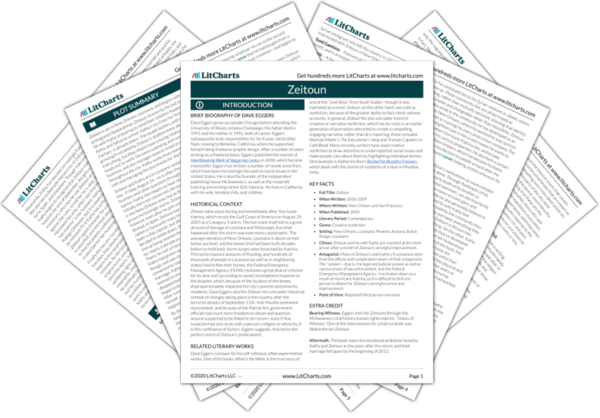sometimes recalls the beauty of the , which allowed him to move and listen carefully. The canoe was gone when he finally returned to Claiborne, and the house
had been robbed too, since the policemen had left the house unlocked. The other things were replaced, but Zeitoun keeps an eye out for the canoe still, wondering if his daughters will now like it more, and will be drawn to the water like generations of Zeitouns before them.
